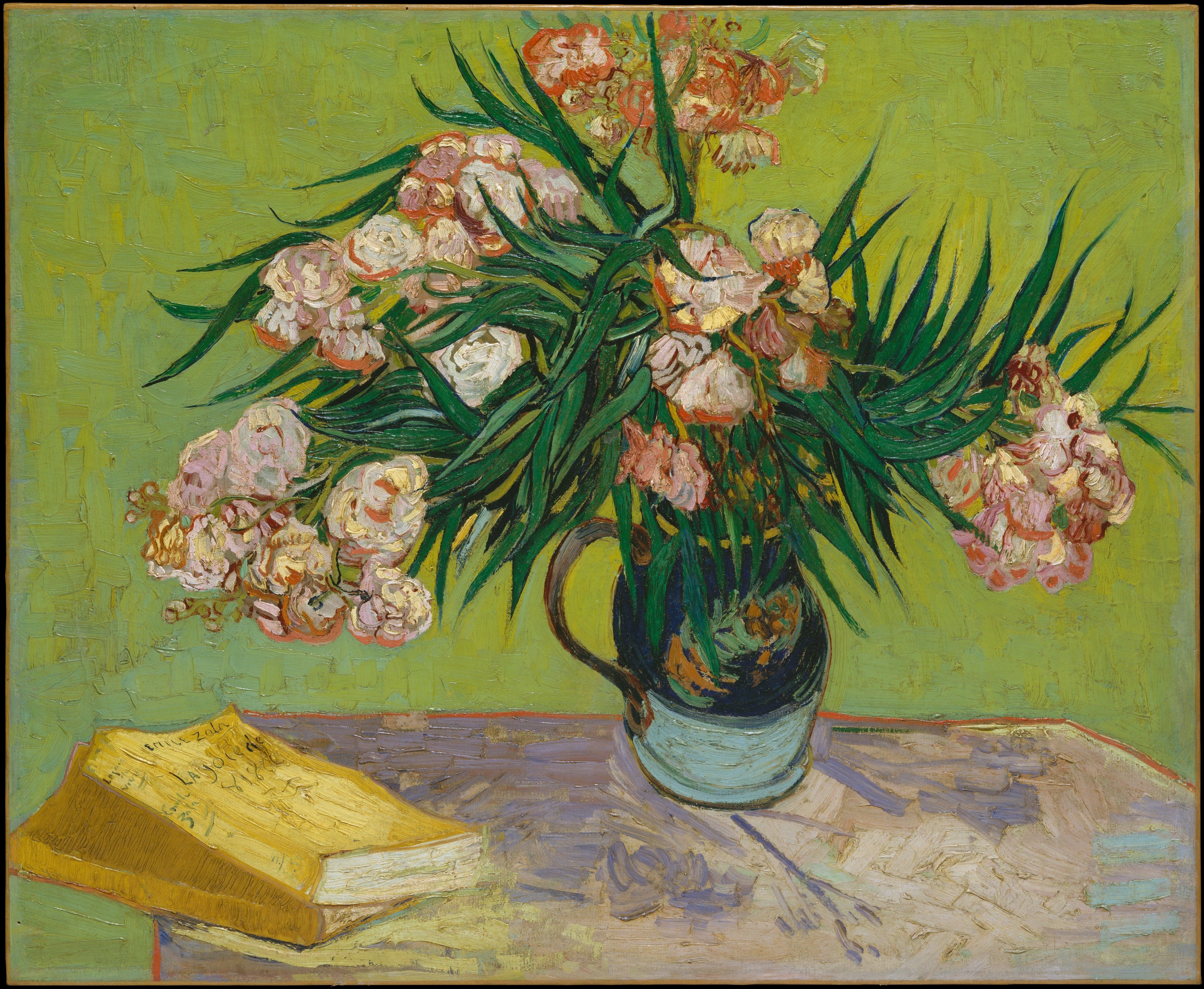
Oleanders
For Vincent van Gogh, oleanders were more than just vibrant flowers—they were potent symbols of joy, vitality, and the resilience of life. As he once wrote, they bloomed “inexhaustibly”, forever “putting out strong new shoots,” even in harsh conditions. In this luminous still life, painted in August 1888 during his stay in Arles, Van Gogh captures that life-affirming spirit in full bloom. The lush, pink blossoms burst from a green majolica jug, a favorite vessel he also used in other still lifes from this period, its deep color harmonizing with the foliage and grounding the composition.
But this is no mere decorative arrangement. Van Gogh thoughtfully places the bouquet beside a copy of Émile Zola’s novel La Joie de vivre—a deliberate and loaded juxtaposition. In doing so, he draws a symbolic connection between the resilient oleanders and Zola’s celebration of life's tenacity and sensuality, especially in the face of suffering. The pairing contrasts starkly with Van Gogh’s earlier 1885 still life painted in Nuenen, where he positioned an open Bible alongside Zola’s novel, suggesting a dialogue between religious faith and secular, lived experience.
Here in Arles, the shift is clear. The Bible is gone, and La Joie de vivre remains, now framed by flowers that echo its message: that life, in all its messy beauty and imperfection, is worth embracing. The composition radiates warmth and energy, from the rhythmic curves of the blossoms to the vibrant palette that pulses with Van Gogh’s characteristic intensity.
At once a celebration of natural beauty and a deeply personal philosophical statement, this painting reflects Van Gogh’s ongoing exploration of art, literature, and meaning. It speaks to his desire to find hope and affirmation in the simple, persistent forces of the natural world—even in a time marked by emotional turbulence.
Choose options


Oleanders
About Artist

Vincent van Gogh
